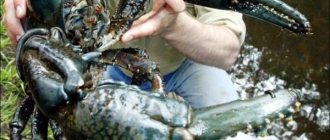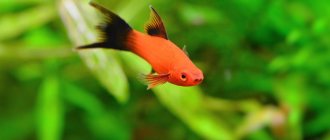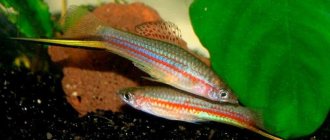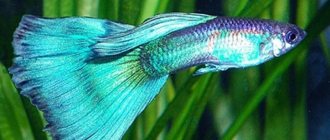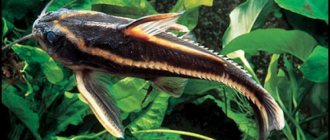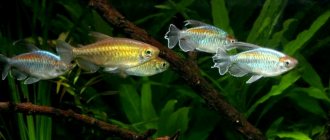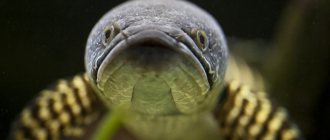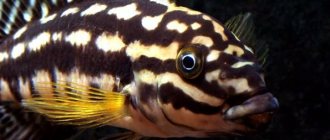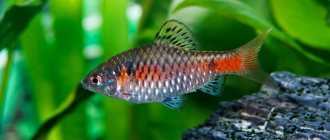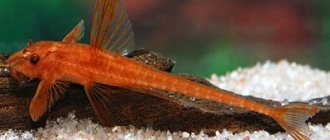Joma shorts
799 ₽ More details
Joma shorts
799 ₽ More details
Joma sneakers
Crayfish is popular among many people. Some people like to eat it, since such meat is considered a delicacy. Others enjoy fishing. And some breed arthropods at home. But it turns out that rarely does anyone know what crayfish eat. Indeed, due to incorrect information, many people think that their main food is carrion and rot, but this is far from true, because the diet of crayfish is very diverse.
There are many types of crayfish
Description
Crayfish is a typical representative of higher crustaceans. It can be found in fresh water bodies, where in summer the water warms up to 22 degrees above zero. The main activity of crayfish occurs at night, and during the day they hide in burrows and under snags. Crayfish meat is considered a delicacy. It began to be used as food in the 17th century. This dish can be found in the cuisines of different nations of the world. Crayfish are also actively used in medicine, dietetics and cosmetology. Today, crustaceans are bred on an industrial scale, in particular in China, the USA, Turkey and Germany.
Description of the structure of crayfish
A description of the structure of crayfish will allow you to learn more about this aquatic inhabitant and accurately distinguish it from other representatives of crustaceans. The body of the animal reaches 15-30 centimeters in length. On top it is covered with a shell of chitin (shell). The color of the crayfish may vary depending on its habitat. The most popular colors: brown-green, blue-black (close to cobalt) and brown. The crustacean needs this color scheme in order to camouflage itself at the bottom of the reservoir.
The creature's body has two main sections: the abdomen and the massive cephalothorax. © https://ydoo.info/product/rechnoy-rak.html At the top of the head there is a sharp spike (chitinous), and on the sides there are two bulging eyes. The latter have a complex structure and are located on movable stalks. Chitinous mustaches grow next to the eyes - two pairs of long and two short. They perform tactile and olfactory functions.
The cancer's mouth is modified limbs. The upper jaw is represented by the first pair, and the lower jaw by the second and third. Under the shell of the cephalothorax there are gills, which play the role of the respiratory system.
The animal's chest has eight segments, each of which has a pair of single-branched limbs:
- four pairs of walking legs;
- one pair of claws, which are necessary for attack, defense and holding;
- three pairs of jaws that capture and deliver food to the mouth.
The abdomen is represented by seven segments, on which there are five pairs of two-branched legs, which the crayfish needs for swimming. The last segment of the abdomen and the sixth pair of legs are connected to form a caudal fin.
This is interesting! Male crayfish are very different from female crayfish. The latter have wider abdominal segments and less powerful claws. The dimensions of females are somewhat smaller.
Alternative version
Some databases do not adhere to generally accepted classifications. The maxillopod group is not recognized in them and is divided into two superclasses, which, in turn, are formed into several subclasses. This allows us to better systematize knowledge about animals. The main subclasses are as follows:
- Carp eaters or carp lice live in fresh or sea water and parasitize amphibian tadpoles and fish. Previously, they included two orders, but now one of them is considered extinct.
- Copepods or copepods are the largest taxon, the study of which is devoted to an entire section of carcinology. The science of copepodium has helped to establish that most species included in the subclass are considered parasitic forms, with some of them being quite large and reaching 6.5 cm in length. Such individuals reduce the number of fish. There are also free-living representatives that live in the water column. On the contrary, they often become food for fish. They themselves either prey on young generations of other crustaceans, or are content with bacteria and algae filtered from the water.
Copepods often become food for fish - Mystacocaridae. Representatives of the 12 species included in this subclass are so small that they live in the space between grains of sand on the coasts of America, Africa and the western Mediterranean. Their length does not exceed 1 mm, but at the same time they have a fairly developed body, consisting of two sections and six pairs of appendages.
- Five-mouths. This subclass has many names - tongue worms, pentastomids, linguatulides. All representatives parasitize the respiratory tract, nasal cavities, lungs and sometimes the liver of various animals. Their hosts include reptiles, mammals and birds. Some species are dangerous to humans because they cause invasive diseases.
- Tantulocaridae. Another subclass that belongs to parasites, and they often choose representatives of other orders of crustaceans as hosts. Their owners, in turn, can themselves parasitize another animal.
Pentamouths parasitize the respiratory tract of other animals.
This classification is just another option for systematizing crustaceans. A unified concept has not yet been developed, so the process is delayed due to disagreements among researchers. There is an opinion that the subtype should also include insects. If this statement is accepted by the scientific community, the entire systematization will have to be reworked anew: new common characteristics will be identified and unification into a taxon based on the degree of relatedness of species will be abandoned.
Representatives of the crayfish class
There are quite a lot of representatives of the crayfish class, all of them are decapods. But among them two of the most interesting can be identified, namely:
- Broad-toed crayfish. Representatives of this species have a significant life expectancy - up to 25 years, but today they are quite rare. Broad-toed crayfish live exclusively in clean water.
- Narrow-toed crayfish. It is distinguished by a slender body and elongated claws. This type of cancer can live in almost any body of water, even quite polluted one.
During the daytime, any representatives of crayfish sleep in burrows, under snags and stones. And at night they go out hunting. A distinctive feature of these animals is their peculiar movement: crayfish move backwards, and if they are frightened, they immediately swim away.
Internal organ systems
An animal's body cavity consists of a complete set of organ systems.
The nervous system of crayfish consists of a peripharyngeal ring and a nerve chain located in the abdomen. These individuals have well-developed nerve ganglia, namely the suprapharyngeal and subpharyngeal ganglia. From the first of them, the nerve endings diverge to the organs of smell, touch and vision. The subpharyngeal node controls the oral opening. Branches from the abdominal chain diverge to the limbs and internal organs.
Considering the pattern of blood circulation, we conclude that a closed circulatory system is not typical for crustaceans. Blood flows through the vessels directly into the cavity and enters the internal organs. Having given them nutrients and oxygen, it returns to the heart through the vessels.
One of the features of crayfish is that representatives of crustaceans can be classified as “noble” animals, since they have blue blood. Most animals and humans contain the respiratory pigment hemoglobin in their blood, which is rich in iron and red in color. Instead, crayfish have the pigment hemocyanin, which is rich in copper.
Food and accommodation features
The diet and living habits of crayfish distinguish them from other crustaceans. These inhabitants of reservoirs, which, by the way, live in any fresh, clean reservoirs where the water warms up to 22 degrees in the summer, are considered omnivores. They are even capable of devouring their own kind (especially defenseless ones and after molting).
In the first years of life, crayfish feeds mainly on plant foods, but feasts on insect larvae and snails. At one year of age, crustaceans begin to eat plankton and water fleas. Crayfish also feed on carrion, tadpoles, and worms, which fishermen use to catch these animals. Interestingly, females eat much less frequently, but eat larger amounts of food at one time.
The lifespan of crayfish has not yet been fully studied. But long-term studies have made it possible to determine an approximate figure - about 8-10 years. It is also known that cancer is a heterosexual creature. Sexual maturity occurs at 3 years in males and 4 years in females. The latter are capable of laying up to eight hundred eggs at a time.
Incubation apparatus (IRIK)
The incubation apparatus is a box with a set of cells; an egg crayfish is placed in each cell. The cell initially contains females with embryos, and then with crayfish larvae, which are kept in the apparatus until the end of the first molting of the grown-up juveniles. The capacity of the IRIK is 50 female crayfish, the cell dimensions are 150 x 50 x 45 mm. At the bottom of the cell there should be a 1 cm wide gap where the crayfish larvae will emerge after the first molt.
Figure 5. Incubator for cancerous females
One lid is intended for ten cells (20 holes with a diameter of 1 cm are made in the lid above each cell - this is done to improve water exchange). The covers are located under water. The shelf with the described cells is installed in a seven-story rack.
Composition of crayfish meat
Crayfish meat contains 15.5% proteins, 1% carbohydrates, 1% fats and 0.13% cholesterol. This makes meat dietary, so its consumption is accessible even to those who are watching their figure.
Crayfish meat is rich in useful minerals, including chlorine, nickel, molybdenum, calcium, phosphorus, potassium and sulfur. And in terms of the amount of iodine, such a delicacy surpasses even beef. Among the vitamins, cancer contains A, B1, B2, C, D, E, PP. The crustacean shell contains a huge amount of biologically active substances and chitin.
Benefits and harms
Everyone who plans to consume such a food product should know the benefits and harms of cancer. The beneficial properties of this type of meat are truly invaluable, since it is considered easily digestible. This product is valued for its amazing taste (crayfish is tasty without any seasonings), and also for the fact that when consumed regularly:
- vitality increases;
- immunity improves;
- metabolic processes are accelerated.
In addition, regular consumption of crayfish is an opportunity to improve the condition of the cardiovascular, nervous, musculoskeletal systems, liver and thyroid gland. And the chitinous shell of the crustacean has an antiseptic and wound-healing effect.
In general, we can conclude that the benefits of crayfish are obvious to every person. Thanks to the special composition of the meat, blood vessels and bile ducts are cleansed, the activity of the pancreas and thyroid glands is toned, damaged tissues are restored through accelerated regeneration, and the removal of radionuclides and toxins from the body is activated. Frequent consumption of boiled crayfish is an opportunity to normalize carbohydrate metabolism, improve the condition of the skin and rejuvenate the body as a whole.
The harm from cancer is explained by a possible allergy, since this product has a unique and rather specific chemical composition. The strongest allergen is a protein found in cancerous meat. But individual intolerance can occur to any component of this product.
It is important! Iodine, which is present in cancer, can only help as a preventive measure. But meat will not help in the treatment of thyroid diseases. In addition, it is better to avoid its use if there are serious endocrine disorders, since excess iodine can have a negative effect.
Do not forget that only fresh crayfish can be cooked. If you omit this, at first glance, such a simple recommendation, then there is a high probability of “earning” problems with the gastrointestinal tract.
Fishing tips
Fishing tips will help you catch crayfish in their natural habitat. This procedure is simple, and anyone can easily handle it. There are many ways to catch crayfish, but the most common are:
- manually (not the most “pleasant” method);
- a special crayfish catcher (homemade or purchased);
- shoe (folk device);
- with a fishing rod (the longest way).
Catching with your hands is extremely simple. We need to find crayfish holes and get their inhabitants out of the shelter. Of course, the animal will defend itself, so it can be unpleasant. Finding holes is not difficult, just move slowly along the coast of the reservoir (mainly where reeds grow), carefully feeling the bottom.
The clamshell is a great alternative. You need a net and rope, with which you can easily make homemade tackle. You should lay out the net at the bottom of the reservoir, first tie a rope to it, put the bait in the center and wait. Every 20-30 minutes you need to check: perhaps the crayfish have already crawled in search of prey. When using a purchased analogue, the algorithm of actions is similar: the product with bait must be immersed in water and wait until the crayfish crawl inside.
The shoe method is practically no different from the crayfish trap, but it is somewhat inferior in efficiency. You need to put the bait inside the shoe, tie a rope to the edge of the back and lower it to the bottom. It will take a little longer to catch, but there is still a chance to catch the crayfish.
Catching crayfish with a fishing rod is a difficult task. But you can try. You need to fix the bait on the hook, cover it with nylon and lower it into the water. Please note that the fishing line must be thick, otherwise the crayfish will simply bite it with its claw and run away.
In addition, it is important to know where the best places to catch crayfish are. The following areas are ideal:
- Coast with cliffs. Crayfish settle here if there is a drop in the river below the coastline. A prerequisite is the presence of peat or silt at the bottom of the reservoir.
- Coastline with stones. This is one of the most attractive areas for crayfish. They will settle under cobblestones, constructing burrows.
- Sandy bottom. The main advantage is simple crayfish hunting. Algae in such reservoirs is usually quite small, the bottom is clearly visible, so hunting for crustaceans will definitely be successful.
- Backwaters with snags. Crayfish live here in huge numbers. It is in such places that large specimens can be found.
- Burrows and holes in the ground. They can be seen in places where the banks have cliffs. Typically, crayfish create burrows with a diameter of about five centimeters, which are very easy to detect with the naked eye.
- Shell rock. If the bottom is strewn with this material and there are reeds nearby, crayfish are probably also living here.
- Banks in water. If you notice similar “decor” on a pond, there is a high probability that crayfish live in it (provided that the reservoir itself is clean enough).
Types of feed
Crayfish are absolutely omnivorous creatures. They are fed both plant and meat foods. In nature, they spend most of their time in shallow waters in search of food, where they feed on a variety of mollusks, small fish, tadpoles, worms, and insects. Among plant foods, crayfish prefer water lilies, elodea, and pondweed. The total share of plant foods in the diet of arthropods is up to 90%.
Preparing feed yourself
Homemade food for crayfish should be similar to the food they are used to consuming in their natural environment. Replacement of animal food is bloodworms, pieces of squid, fish, shrimp or lean meat.
When preparing a diet for crayfish, crayfish should receive food of animal origin no more than twice a week. Many crayfish breeders claim that meat feed provokes the aggressive state of arthropods.
From plant foods, crayfish are fed the following products:
- zucchini;
- lettuce leaves;
- cucumbers;
- Chinese cabbage;
- spinach;
- carrots (contains keratin, which significantly enhances the color of crayfish);
- hornwort (the plant should be located in the habitat of crayfish).
When planting plants in an aquarium or a created pond, you must be extremely careful, because very often they are treated with insecticides, which can cause mass death of arthropods.
Industrially produced feed
Industrially produced food is available in granular form in various sizes, in the form of flakes or sticks.
Whichever option is preferred, the food must meet the following criteria:
- do not pollute the water in the pond;
- provide balanced nutrition;
- maintain the natural color of the shell;
- facilitate the process of changing the shell.
Specialized stores can offer types of food that are intended for special periods of life of crustaceans. For example, specialists often use feed designed to stimulate reproduction processes or strengthen the immune system of young animals.
How to choose crayfish in a store?
How to choose crayfish in a store? This question interests those who are sure that catching crayfish on their own is not suitable for them. You should remember a few rules so as not to purchase a low-quality product. The main requirement is that you only buy live crayfish. And also pay attention to mobility. Cancers should move their whiskers or limbs. Inactivity indicates that the cancer is sick or has been in the water for more than two days. You should refuse such a purchase.
If you want to buy boiled crayfish, the selection criteria will be as follows:
- color saturation (it should be red and uniform);
- odors (any foreign or unpleasant odors should be absent);
- cleanliness of the shell (dirt, stains and damage must be excluded).
When purchasing a cooked product in packaging, you should pay attention to the expiration date and production date. Remember that packaged crayfish can be stored for no more than four days.
Feeding the young
Young animals are fed differently than adult crayfish. Young individuals are fed with small daphnia, food for fish fry, vinegar nematode, crushed tubifex, and brine shrimp.
When feeding small daphnia to crayfish, it is first recommended to scald it with boiling water, because when alive it is very mobile, which will make it difficult for small crayfish to catch it.
Young crayfish need more food than adults. For these reasons, they search for food day and night. They feed on detritus - a product of the natural decay of various organic matter. For example, in an aquarium whose water is constantly filtered, there is very little detritus.
To replace it, fallen leaves of trees are often used. It is better to give preference to dry leaves of oak, alder and beech - they will be an excellent source of valuable food, which not only promotes the development of their digestive system, but will also help get rid of parasites. Crayfish eat leaves in an aquarium very quickly; they need to be added regularly.
It is prohibited to use freshly picked leaves to add to the aquarium - they have the ability to release toxins into the water.
Recommendations for preparation and use in cooking
Recommendations for preparation and use in cooking will be useful to every housewife. The first thing you need is to become familiar with the cooking technology. It involves the following main steps:
- cooking broth from carrots, parsley, dill seeds, salt, pepper (peas), bay leaf, celery root and cloves;
- cooking crayfish in broth for 10-12 minutes.
Proportions are selected individually depending on the number of crayfish. On average, for 10 crayfish it is enough to take one carrot, a medium bunch of herbs and a small amount of spices. You will get a rich liquid.
Advice! Many gourmets are experimenting with traditional broth. They often add white wine, cucumber pickle, and even beer to the broth. It's a matter of taste.
Not everyone knows that crayfish can not only be boiled. This product can be prepared as follows:
- stew in milk;
- bake in the oven, sprinkled with Parmesan;
- fry in oil;
- add as an ingredient to fish soup;
- add to fresh salad (cleaned meat);
- stew with vegetables (for example, tomatoes);
- add to the side dish along with other seafood;
- Boil in beer, wine or kvass.
The most popular dish remains boiled crayfish, which is eaten as a separate dish or snack. Also popular are soup with crayfish (it is richly seasoned with vegetables and herbs) and crayfish aspic (reminiscent of jellied meat).
It will be useful to familiarize yourself with the ingredients that perfectly highlight the taste of crayfish. Among the herbs and spices, it is worth highlighting thyme, bay leaf, nutmeg, and red pepper. Vegetables and fruits you can use are onions, potatoes, tomatoes, celery, carrots, leeks, avocado, lemon. Among the dressings, you should pay attention to cream, table wine, vegetable oil (olive and sunflower), milk, beer. Crayfish also goes well with chicken eggs, chicken, rice and seafood.
Many housewives are concerned about the question of how to properly store crayfish. First of all, you need to decide on the dishes. It is not recommended to use metal containers. Crayfish meat contains a significant amount of sulfur. This leads to the fact that when it comes into contact with metal, the product begins to turn black and deteriorate. A suitable alternative is glassware.
The shelf life of boiled crayfish is as follows:
- for two hours in the fresh air;
- 3-4 days in an airtight container in the refrigerator;
- 3 months in the freezer.
Application in cosmetology and medicine
The use of crayfish in cosmetology and medicine is very common. With their help, specialists have learned to heal the human body and cope with diseases of the liver and thyroid gland (cancers are used as a component for medicines). These products are recommended in the diet for the prevention of heart failure, kidney and pancreas problems. And also regularly eating crayfish is an opportunity to improve metabolism.
Since ancient times, crayfish have been used as a natural antiseptic. The chitinous shell of the crustacean was ground into powder, which was used to treat purulent wounds and ulcers. Currently, a substance such as chitosan is obtained from the cancer shell. It is subsequently used to treat immunological disorders, malignant tumors, as well as to cleanse blood vessels and reduce cholesterol levels in the blood. Based on the same substance (chitosan), regenerating ointments, contact lenses, surgical threads, bactericidal patches and some other medicines are prepared.
Experts often recommend using the product for those who plan to lose excess weight. In terms of nutrients, crayfish are ahead of shrimp and oysters. All this, together with its low calorie content, makes the product one of the most valuable for a weight loss program. In particular, crayfish can replace a full meal. Their use is allowed even if you follow the “Kremlin” diet, which is famous for its strict restrictions. Crayfish will be especially useful in combination with cucumbers, broccoli, apples, boiled fish, seafood, beans and spinach.
In cosmetology, the area of use of crayfish is no less significant. Here, too, the main emphasis is on the use of chitosan. It is included in lotions to moisturize the skin, creams, masks and products to protect the skin from UV radiation. In addition, chitosan is used to prepare products that effectively fight fat cells, helping to break down cellulite. The main advantage of such cosmetic preparations is naturalness, harmlessness and non-toxicity.
Regular consumption of cancer is an opportunity to improve your own body. In addition, this product contains components that can have a beneficial effect on a person’s appearance and improve his mood. At the same time, crayfish is a surprisingly tasty dish that will appeal to even the most discerning gourmets.
